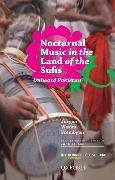Psychological Characteristics of Non-alcohol and Alcohol Consumption Among Football Players
BücherAngebote / Angebote:
Alcohol beverages have been widely consumed by human beings since prehistoric times, being useful for reducing anxiety, for religious ceremonies and for medicinal purposes (Das et al., 2006, McMillan, 1985). "Alcohol consumption has remained an integral part of many cultures for thousands of years (McGovern, 2009)". Almost every culture has been used to using fermented fruit juice, grains, and honey in order to produce an alcoholic beverage. Hence, the consumption of alcohol was often linked with particular communal festivals, folk rituals, community activities, and so on. Before the modern period, fermented alcoholic beverages have been used by most indigenous tribal people societies all around the world. Many traditional fermented beverages had a relatively low amount of alcohol content and could not be stored for many days. Even these days, societies around the world continue to consume several types of beverages produced by indigenous tribal people (Willis, 2006).Alcohol is not an essential diet for human beings, it supplies small nutrient energies however it is frequently consumed and normal dietary for a large part of the world's population. The WHO "recommends that adult men should not consume alcohol more than 30-40 grams per day respectively". Alcohol consumption has been constantly increasing worldwide recently, but the majority of people in the world have refrained from alcohol in the past 12 months of 2016 (WHO, 2018). Worldwide, "individuals above 15 years of age drink on average of 6.2 liters of pure alcohol per year, which interpret into 13.5 grams per day (WHO, 2014)". In 2012, it was estimated that about 3.3 million people of all deaths worldwide were caused by alcohol-related illness and 5.1 percent of the world's problem disease is related to alcohol intake (WHO, 2014, Girish et al., 2016). The dangerous use of alcohol is one among the top 5 risk factors leading to premature deaths, disease, and disabilities throughout the world (WHO, 2011). Despite the large social, health, and economic burdens linked to the harmful effects of alcohol, it has remained a relatively low priority in the public health program the government.
Folgt in ca. 15 Arbeitstagen

